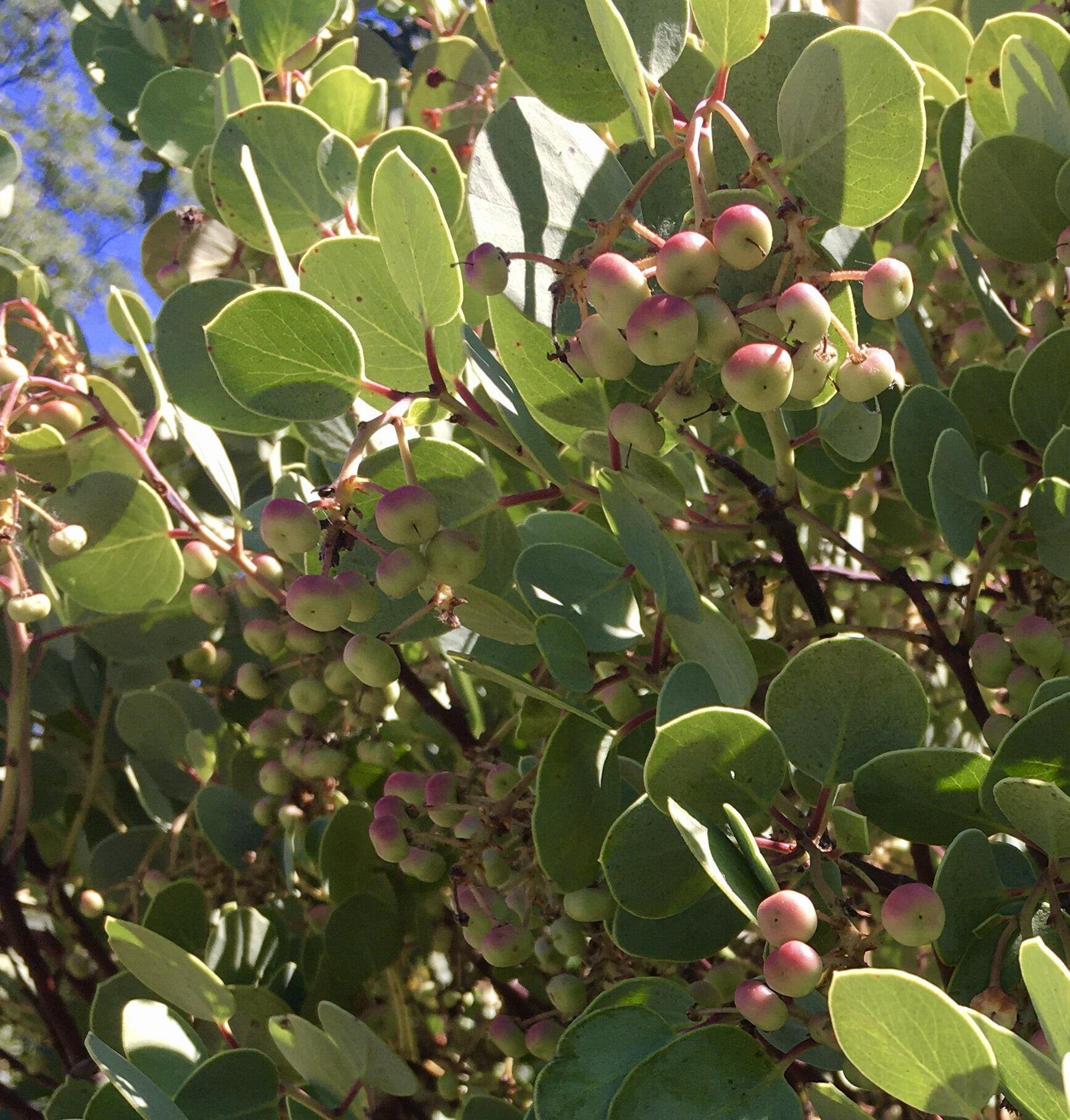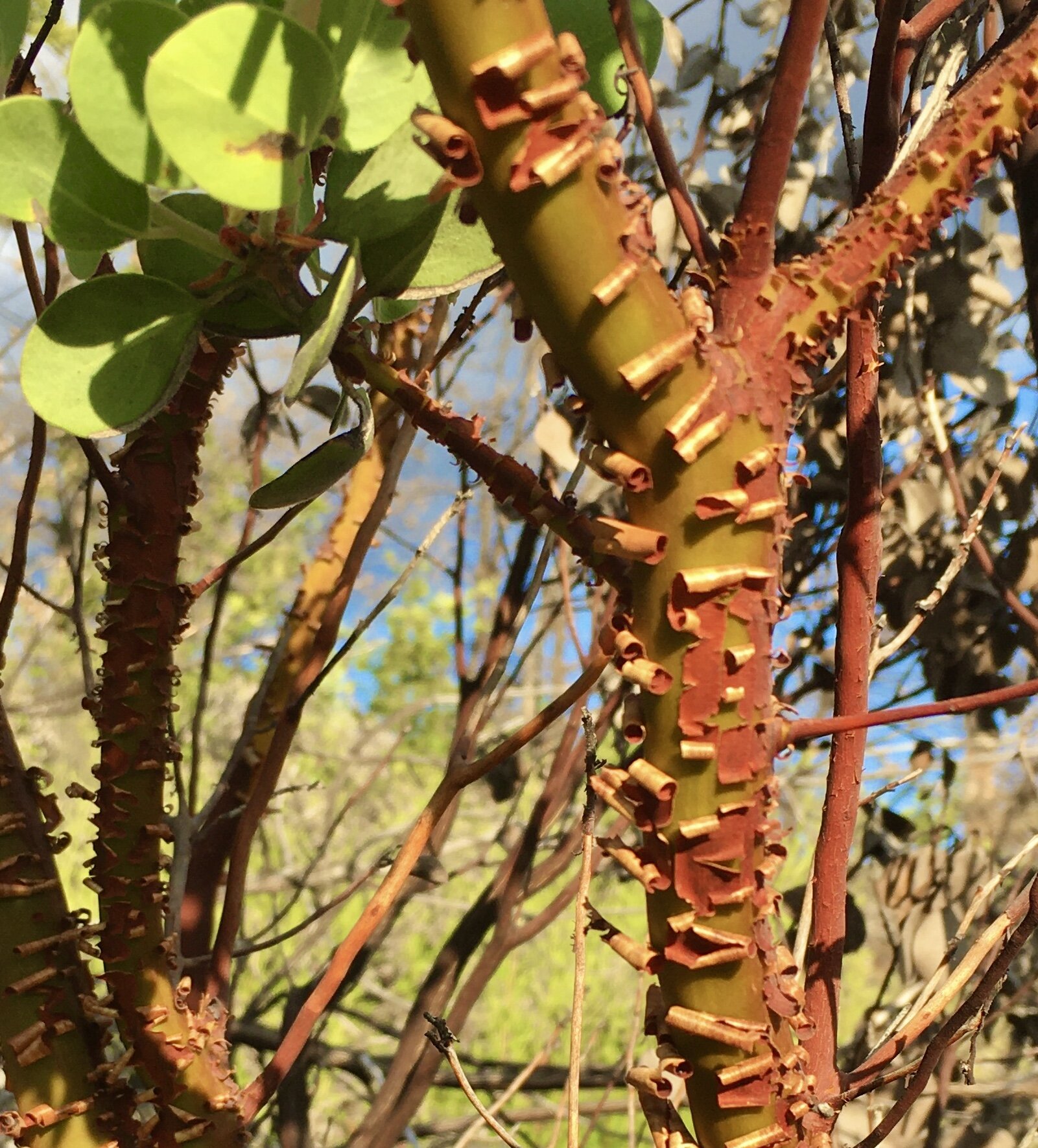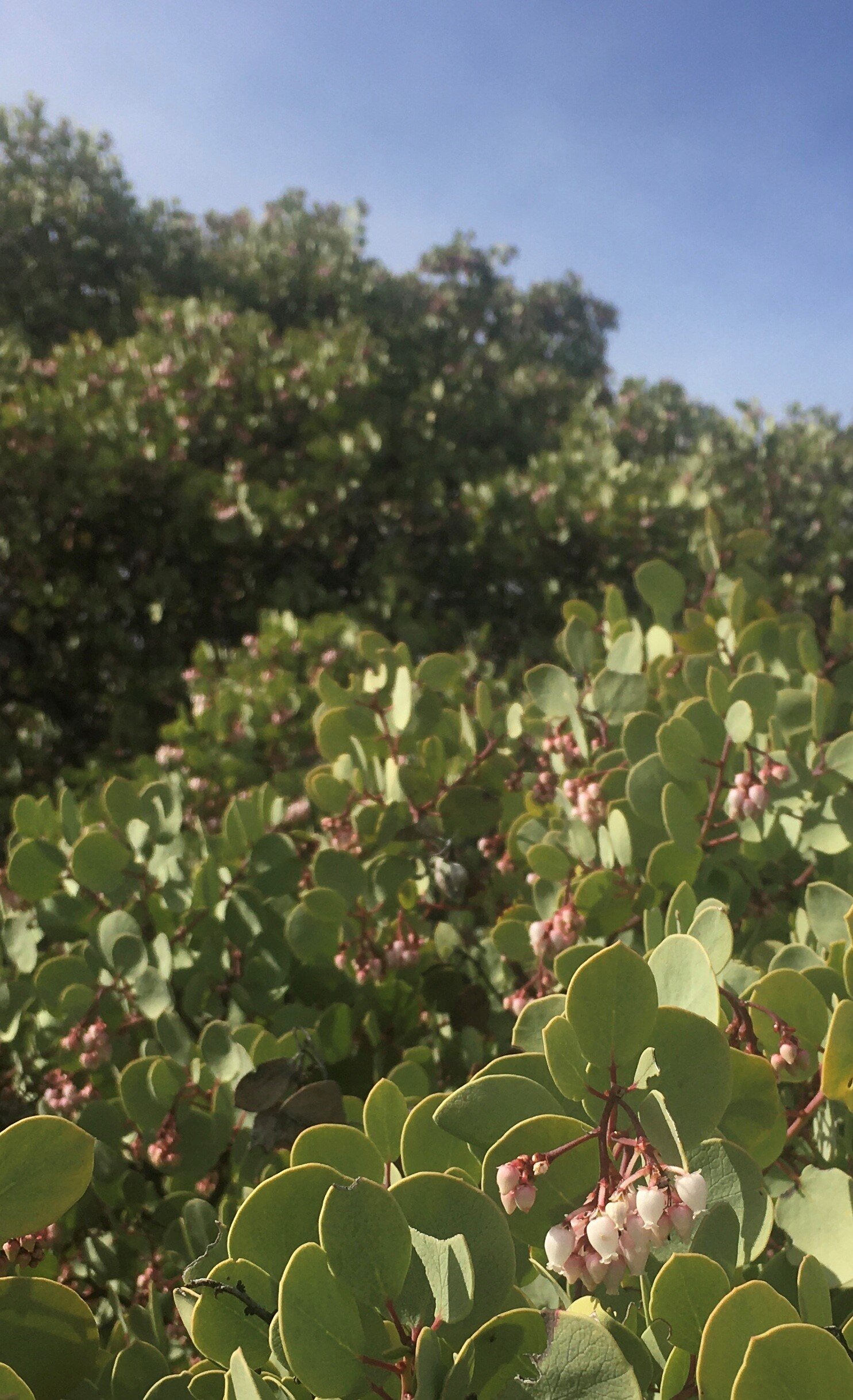Native Food Plants: Meet the Plants
By Brian Geier
In past blog posts, we wrote of Camas and Elderberry, two native food plants that we are working with at Vesper Meadow. Efforts include monitoring plant populations, propagation and restoration trials, developing educational activities and lessons, and Indigenous-led partnerships like the Indigenous Gardens Network.
We have been learning about other species of native food plants as well (both those at Vesper Meadow and those in the wider bioregion), and sharing tidbits weekly under the hashtag #nativefoodplantfriday. Read on to see a few of the plants we have enjoyed learning about so far in 2020.
Learning about native food plants is journey of discovery…
revealing fascinating inter-species ecological relationships,
informing us of Traditional Ecological Knowledge practices and technologies,
highlighting indigenous rights to traditional foods, materials, and sacred sites,
broadening our understanding of the true history of colonization,
providing insight into potential land restoration approaches or garden/farm projects,
bringing diversity into our diets and food systems,
connecting us to the land, Peoples, plants, insects, and animals that call or have called our region home since before European contact.
Want to see and learn about more native food plants in person? Join Vesper Meadow and special guest Tyler Wauters from the Hawthorn Institute for:
Learning and Restoring with Native Food Plants
Saturday, October 10th, 1-5 pm
Learn more and RSVP here.
Elegant Madia
Oil-rich Seeds
Elegant Madia (Madia elegans) is one of the “tarweeds” native to the west coast. You might know tarweeds by their intense smells, or the oily substances that might remain on clothes or pet’s legs. These plant oils are one way that tarweeds preserve moisture and remain incredibly drought tolerant. Another way that Madia elegans preserves its moisture is by closing the only part of the plant that isn’t covered in oil, its flower, during the day.
Research suggests that tarweeds’ oil (or sticky tar) is a way to capture insects, which attracts predatory insects that in turn eat other bugs that might otherwise feast on the tarweed plant or seeds.
Seeds of several species of tarweed have been staple foods for some west coast Tribes. They are protein rich, and, like the leaves/stems, are rich in oils, and have been parched and ground into granola-bar-type foods, and mixed with other traditional foods including manzanita berries, acorns, pine-nuts, and roasted camas. Traditional harvesting techniques include the use of fire before harvest, and gathering with a beating stick and basket, a set of harvesting technology that spreads seed as it is collected. Reports of traditional tarweed harvests speak of large numbers of harvesters working for days, and that the loud swishing sounds of tarweed harvests was a familiar late summer sound of the grasslands.
Keep an eye out for this showy flower along roadsides and hillsides, and under powerlines. You’ll have to be up early in August to catch a glimpse of the flowers, who greet the morning with true elegance. Vesper Meadow and The Understory Initiative are working with Madia and many other species to increase the diversity of species used in restoration projects around southern Oregon. Read more about these efforts here.
Fernleaf Biscuitroot
Root food and medicine
While "fernleaf biscuitroot" (Lomatium dissectum) has been used for food, hence the "biscuitroot" name, it may be more known as a powerful medicine. A surge of interest in L. dissectum at the onset of the COVID-19 pandemic led to shortages of products, seeds, and plants of this species, due to its reputation as a medicine for flus and pneumonia, and for its reported successful use during the flu outbreak of 1918. It and related species have been called "Toza" (Paiute/Numic-speakers of the Great Basin), "Doza" (Washoe), "Cha luksch" (Warm Springs), or, generally, just "BIG MEDICINE". Traditional uses include medicinal broths and steams and various root foods.
The Biscuitroot Cultural ACEC (Area of Critical Environmental Concern), lands managed by the BLM but set aside for use by Burns Paiute Tribal members, is used for sacred/religious activities, and gathering of several species of Lomatium. Tribal users report that due to the designation as a Cultural ACEC, grazing impacts have lowered. However, the primary complaint by Tribal users has been root-depletion by "other, non-local root diggers". Lomatiums are a member of a plant family with several poisonous species, so absolute plant ID is a must for those of us interested in working with this genus, and the report from Tribal members about the Cultural ACEC highlights the need that consideration of indigenous rights always be given when working with native food plants. United Plant Savers lists L. dissectum as at-risk of being under exceptional harvest pressure. Volunteers at Walk, Weed, and Seed events collected fernleaf biscuitroot seeds that will be used in restoration trails at Vesper Meadow beginning in fall of 2020.
Manzanita (Arctostaphylos spp)
Manzanita (“Little apple” as it was named by Spanish colonizers in early California) produce sweet berries that have traditional uses as a sweetener/sugar and in making refreshing ciders or sweetening meats/fish/flours. Arctostaphylos species (there are 16 species native to the northwest) include other names like Bear-berry (Arcto means bear and staphyle means cluster of grapes) and Kinnikinick (a common name that originates from words for a mixture of herbs/leaves used like tobacco). Berries, which ripen in late summer, can be eaten raw as a trail nibble, but spit out the seeds or you might get a tough stomach ache! Berries have traditionally been gathered dry, then pounded and the seeds separated, to make manzanita “flour” which is very sweet and can be used like sugar. Fresh or dried berries can be boiled in water to create a refreshing cider, a food practice shared by several tribes in the Pacific Northwest.
Aside from making a cool drink, Manzanita plants are pros at staying cool themselves. Their leaves are thick, waxy, and rotate so their edges face the sun, protecting their moisture. And their thin bark peels back at about summer solstice to reveal green stems, which can photosynthesize and feel cool to the touch, earning the tree the name “refrigerator tree” (along with its cousin, the Madrone). Leaves can be made into hot tea or cold infusions, and have been used as a cool drink, as a wash for poison oak rashes, or drank medicinally for urinary tract infections (they are related to “uva-ursi” and cranberry). Manzanita have been important enough to Tribes in the region that individual families sometimes tended to great swaths of them and handed down the responsibility generation to generation. As with all plants, humans are not the only species that enjoy them. Some people refer to Manzanita as the “staff of life” for other species in our region, second only to acorn. Birds and mammals of all sorts eat the abundant berries. Some species of moths are completely dependent on Manzanita as a host. Manzanita's dead and browned branch sections (which may be a way the trees sacrifice parts of themselves during hot/dry seasons) provide primo habitat for ants. The arching and twisting branch shape offers a plethora of nest-building spots. The roots form relationships with soil fungi, and help produce boletes, matsutake, and chanterelle mushrooms. And the flowers, which arrive as early as January, provide vital pollen and nectar for bees and butterflies. (Interestingly, since they are a winter flower, they protect their pollen from frequent rains by producing downward-facing flowers with fused petals, creating a kind of raincoat for its pollen-producing parts. They are so protected that the native bees that feed on manzanita pollen have had to specialize: certain species can land on the flowers, and, while upside down, disengage their flight muscles from their wings (so they don't float away while performing the next step), then vibrate their muscles just fast enough to produce a pitch/sound (that matches middle C), and it is the sound that releases the pollen onto the bees, or inside the petals to be picked up by hummingbirds, moths, or butterflies later visiting the flowers for nectar.)
Stinging Nettle
Food, Fiber, and Cordage
What does stinging nettle (Urtica spp) have to do with indigenous rights? Many of us know nettle for its sting, or its food uses, (including cooked greens for foods, fresh or dried leaves/roots/seeds for teas, or dried and powdered plant parts for smoothies/cooking). Nettle is also an important cordage plant, and has been made into extremely strong thread/rope on several continents for centuries. The Makah, relatives of the Nuu-chah-nulth tribes of western Vancouver Island, fought for decades in federal courts for the right to fish with nets, as their ancestors did, in what is now known as the Olympic Peninsula. Their opponents in court argued that fishing nets were a European invention, adopted by the Makah, and therefore net fishing would not be granted as a traditional fishing right. However, in the late 1960’s, a series of storms pounded the coast at a site of an ancient Makah village (the Ozette village) that was buried some 500 years ago in a massive mudslide (an event retold by Makah storytellers), and artifacts began washing onto the beach. A team of anthropologists and their students excavated the site, and found more than 55,000 mostly intact artifacts. One artifact was a centuries-old (pre-European contact) fishing net made of twined and woven nettle fibers. Modern-day Makah fishers presented the net as evidence in court, and won their case without further argument. This net, along with a fabulous display of items from the Ozette village site, are beautifully arranged by the four seasons, alongside and inside re-creations of traditional longhouses, and can be viewed at the Makah Museum / Cultural and Research Center in Neah Bay, Washington.
California Bay
Food, Spice, and Protector
Are bay leaves a spice or a repellent? Or both? California Bay (Umbellularia californica) has food uses as well as use as a kind of “pesticide” for storing other foods and goods. Also known as Laurel (CA), Myrtlewood (OR), Pahiip (Karuk), and Wohkelo’ (Yurok), Bay is the west coast’s only native member of the Laurel Family, a plant family whose members are usually trees/shrubs with aromatic oils and “drupe” fruits with a nut-type seed (think avocado, sassafras, and cinnamon). Traditional uses include using leaves for teas, rinses, steams, and purifying/protective boughs/wreaths/incense, and gathering nuts for roasting to make dried cakes, flours, and beverages (which reportedly taste like unsweetened chocolate). Today’s wildcrafters can easily gather leaves for dried use. If using as a substitute for commercial bay, use much, much less, as this native is very strong and the “usual” amount can ruin a dish! Hikers can simply pick and crush and smell leaves (use caution as the oils can irritate some people).
Many animals utilize bay, including deer who browse on leaves (high in protein), flies and gnats who pollinate the flowers, bears and mammals who take refuge in hollowed-out trunks or under the dense, shady foliage, jays who eat seeds and bury them for winter use, and woodrats, who chew leaves, spread them in sleeping nests, and replace them every few days, a practice that decreases eco-parasitism in nests.
According to a Miwok recipe for acorn soup, “it is essential that you add a generous amount of California laurel" when storing acorns to dry, to keep insects away from the acorns.” Bay leaves can be used to keep pests at bay in stored, dried foods, and have traditionally been used to protect baskets, clothing, and other goods as well.







